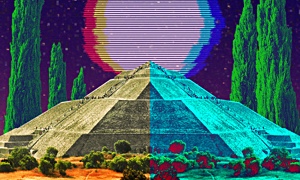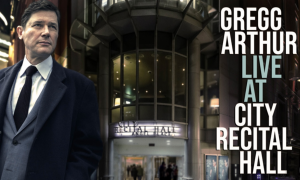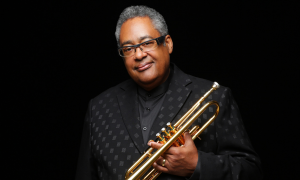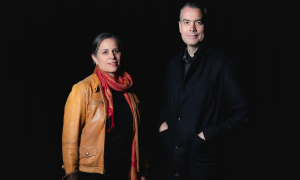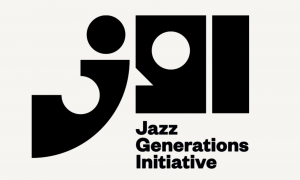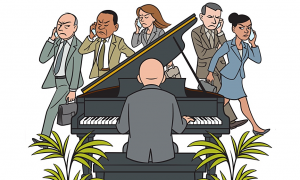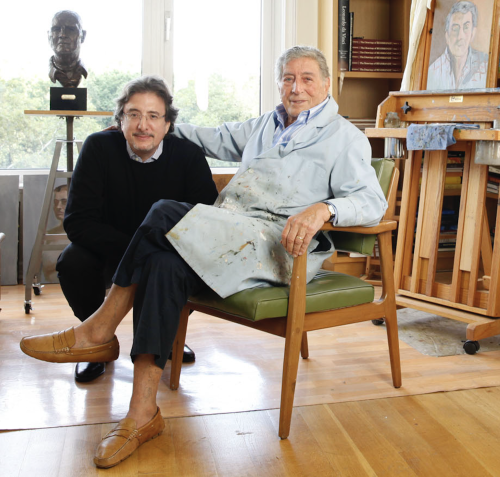
For me, Tony Bennett's passing was personal. Since 2011, I interviewed the singer five different times for The Wall Street Journal, four at his art studio overlooking Central Park. Each time was a revelation, from the interview we did sitting in close quarters on a sofa to the last in 2018, when his Alzheimer's was already evident. It was one of the last media interviews he would give.
The first time I saw Tony, I was with my artist father at New York's Metropolitan Museum of Art. He took me there on Saturdays to look at our favorite paintings. One afternoon in the late 1960s, Tony came sailing through the Impressionists wing with a stunning redhead. My father, a Naval portrait painter during World War II and movie poster illustrator in the late 1940s, spotted him before anyone had turned a head and told me. I was 12.
The next time I saw Tony was in 2011, I had just started to write for the WSJ. A Cuban-American friend invited me to a loft party in Manhattan celebrating the 90th birthday of legendary congaista Candido Camero. At some point during the afternoon event, the large factory-like elevator opened and Tony walked out in a gray suit and black tie, unaccompanied. He had promised to drop by before a performance and he did.
Tony was immediately surrounded by attendees, and he spent about 20 minutes talking with Candido. As I watched, the magnanimous quality about him was astounding and admirable. He had come through for Candido and made the percussionist feel like a million bucks. The favor was a testament to his respect and kindness for jazz artists he knew and had worked with.
Tony was a songbook singer deeply influence by jazz—or, more clinically put, the art of vocal risk-taking where the odds are 50-50 you could screw up. To understand this subtle approach, you have to see him sing a ballad in a video. Only then will you observe the curl of his lip, his coming in late or early with a lyric, or hitting a jazz note instead of the one written for the song. You'll see him work his face like a musical instrument.
Tony also was a ferocious evangelist for the Great American Songbook, treating it as a religious cause. Like the parent who believes his kids should eat vegetables, Tony was convinced that teens would love the songbook if they only were exposed to it. Lady Gaga gave him that opportunity by touring with him worldwide. But for me, the insights above are only half of what made Tony special.
More than any other singer, Tony had a way of making all audiences feel American. I don't mean this in the current context, with all the bitterness, anger and hostility. I mean in the old-fashioned sense of those qualities that make this country special and used to unite us—the optimism, the kindness, the can-do spirit, the striving to be exceptional, the individualism and the abundance of generosity and empathy.
In this regard, no one matched Tony's pure spirit for spreading cheer, making audiences feel loved, and appreciating what's good about individuals, regardless of background, race or religion. Audiences overseas loved this about him as well. For them, he was as American as a Ford Mustang, McDonald's, Coke or Hollywood. There was no one else like him, and his optimism and joy to be alive was spread thick.
In fact, foreigners worshiped him. I recall interviewing Tony in 2016 in an empty Village Vanguard for a Dutch company filming a documentary. I was off-camera but we were set up on directors chairs facing each other with cameras rolling for 45 minutes. The foreign crew from the Netherlands was spellbound. There's nothing more American than a famous singer of popular songs with a broad, welcoming smile.
The last time I saw Tony in 2018, we rode down together in the tight elevator of his building with his long-time publicist, Sylvia Weiner. I sensed Tony looking at me and our eyes met. “I really enjoyed our interview," he said. “You always put me at ease and make me feel comfortable."
Out on the street, I knew this was the last time I'd see Tony. He lived about 15 steps from the building that housed his studio. I said goodbye to Sylvia as Tony made his way purposefully up the handful of wide steps to his apartment building.
As Sylvia left me to accompany him, Tony turned around and walked back down the steps and came over to me. Looking at me, he took my hand. “Thank you very much for everything." We said goodbye, he turned and joined Sylvia and entered his building. Always a gentleman and he left a lump in my throat.
What follows are my 12 favorite videos of Tony, because they exemplify everything that was special about him:
Here's Tony on The Steve Allen Show in June 1958 and then out in the street. For more on how this was show and where go here and here...
Here's Tony on The Ed Sullivan Show in 1951 singing his No. 1 hit Because of You...
Here's Tony on The Ed Sullivan Show singing A Stranger in Paradise in 1954...
Here's Tony singing I Left My Heart in San Francisco in 1964 on The Ed Sullivan Show...
Here's Tony in November 1964 singing The Moment of Truth on The Ed Sullivan Show. I'm guessing this was a live remote from a Columbia studio where Tony was rehearsing for an album. Interesting that two pianists and bass players were used, one set for Tony and one for the band drummer. That's not Sullivan's orchestra or his conductor, Ray Bloch. I believe it's Don Costa, and they were likely in the studio rehearsing for the album If I Ruled the World, which would begin recording in January 1965...
Here's Tony with Andy Williams singing a city medley in 1965...
Here's Tony on The Ed Sullivan Show in 1965 singing It Had to Be You with Bobby Hackett on cornet...
Here's Tony backed by Woody Herman's band in 1965 on the Ed Sullivan Show singing If I Ruled the World, with Hackett on cornet. Watch carefully as he uses his face to sing and listen as he comes in late and early on note and takes risks on notes...
Here's Tony in the 1960s singing The Shadow of Your Smile...
Here's Tony singing For Once in My Life with the Count Basie band in 1969...
Here's Tony and Rosemary Clooney on the Rosie O'Donnell Show in 1996. Tony and Clooney were signed at the same time by Columbia Records in 1950. Among their first tasks was a radio show followed by a TV show called Song for Sale, where they'd sing songs submitted by amateur songwriters. I spoke to Tony about it in 2018. He said Rosie terrified him. “She memorized the lyrics and melodies to these unknown songs instantly. I had to do the same, or at least try." Let them tell you the rest...
And finally, here's Tony at age 61 in 1987, just as his astonishing 30-year comeback was getting underway, recording Henry Mancini's Life in a Looking Glass from the film That's Life! with Mancini conducting. For some insane reason, the song wasn't included on the soundtrack but was released in the Complete Tony Bennett box...
The first time I saw Tony, I was with my artist father at New York's Metropolitan Museum of Art. He took me there on Saturdays to look at our favorite paintings. One afternoon in the late 1960s, Tony came sailing through the Impressionists wing with a stunning redhead. My father, a Naval portrait painter during World War II and movie poster illustrator in the late 1940s, spotted him before anyone had turned a head and told me. I was 12.
The next time I saw Tony was in 2011, I had just started to write for the WSJ. A Cuban-American friend invited me to a loft party in Manhattan celebrating the 90th birthday of legendary congaista Candido Camero. At some point during the afternoon event, the large factory-like elevator opened and Tony walked out in a gray suit and black tie, unaccompanied. He had promised to drop by before a performance and he did.
Tony was immediately surrounded by attendees, and he spent about 20 minutes talking with Candido. As I watched, the magnanimous quality about him was astounding and admirable. He had come through for Candido and made the percussionist feel like a million bucks. The favor was a testament to his respect and kindness for jazz artists he knew and had worked with.
Tony was a songbook singer deeply influence by jazz—or, more clinically put, the art of vocal risk-taking where the odds are 50-50 you could screw up. To understand this subtle approach, you have to see him sing a ballad in a video. Only then will you observe the curl of his lip, his coming in late or early with a lyric, or hitting a jazz note instead of the one written for the song. You'll see him work his face like a musical instrument.
Tony also was a ferocious evangelist for the Great American Songbook, treating it as a religious cause. Like the parent who believes his kids should eat vegetables, Tony was convinced that teens would love the songbook if they only were exposed to it. Lady Gaga gave him that opportunity by touring with him worldwide. But for me, the insights above are only half of what made Tony special.
More than any other singer, Tony had a way of making all audiences feel American. I don't mean this in the current context, with all the bitterness, anger and hostility. I mean in the old-fashioned sense of those qualities that make this country special and used to unite us—the optimism, the kindness, the can-do spirit, the striving to be exceptional, the individualism and the abundance of generosity and empathy.
In this regard, no one matched Tony's pure spirit for spreading cheer, making audiences feel loved, and appreciating what's good about individuals, regardless of background, race or religion. Audiences overseas loved this about him as well. For them, he was as American as a Ford Mustang, McDonald's, Coke or Hollywood. There was no one else like him, and his optimism and joy to be alive was spread thick.
In fact, foreigners worshiped him. I recall interviewing Tony in 2016 in an empty Village Vanguard for a Dutch company filming a documentary. I was off-camera but we were set up on directors chairs facing each other with cameras rolling for 45 minutes. The foreign crew from the Netherlands was spellbound. There's nothing more American than a famous singer of popular songs with a broad, welcoming smile.
The last time I saw Tony in 2018, we rode down together in the tight elevator of his building with his long-time publicist, Sylvia Weiner. I sensed Tony looking at me and our eyes met. “I really enjoyed our interview," he said. “You always put me at ease and make me feel comfortable."
Out on the street, I knew this was the last time I'd see Tony. He lived about 15 steps from the building that housed his studio. I said goodbye to Sylvia as Tony made his way purposefully up the handful of wide steps to his apartment building.
As Sylvia left me to accompany him, Tony turned around and walked back down the steps and came over to me. Looking at me, he took my hand. “Thank you very much for everything." We said goodbye, he turned and joined Sylvia and entered his building. Always a gentleman and he left a lump in my throat.
What follows are my 12 favorite videos of Tony, because they exemplify everything that was special about him:
Here's Tony on The Steve Allen Show in June 1958 and then out in the street. For more on how this was show and where go here and here...
Here's Tony on The Ed Sullivan Show in 1951 singing his No. 1 hit Because of You...
Here's Tony on The Ed Sullivan Show singing A Stranger in Paradise in 1954...
Here's Tony singing I Left My Heart in San Francisco in 1964 on The Ed Sullivan Show...
Here's Tony in November 1964 singing The Moment of Truth on The Ed Sullivan Show. I'm guessing this was a live remote from a Columbia studio where Tony was rehearsing for an album. Interesting that two pianists and bass players were used, one set for Tony and one for the band drummer. That's not Sullivan's orchestra or his conductor, Ray Bloch. I believe it's Don Costa, and they were likely in the studio rehearsing for the album If I Ruled the World, which would begin recording in January 1965...
Here's Tony with Andy Williams singing a city medley in 1965...
Here's Tony on The Ed Sullivan Show in 1965 singing It Had to Be You with Bobby Hackett on cornet...
Here's Tony backed by Woody Herman's band in 1965 on the Ed Sullivan Show singing If I Ruled the World, with Hackett on cornet. Watch carefully as he uses his face to sing and listen as he comes in late and early on note and takes risks on notes...
Here's Tony in the 1960s singing The Shadow of Your Smile...
Here's Tony singing For Once in My Life with the Count Basie band in 1969...
Here's Tony and Rosemary Clooney on the Rosie O'Donnell Show in 1996. Tony and Clooney were signed at the same time by Columbia Records in 1950. Among their first tasks was a radio show followed by a TV show called Song for Sale, where they'd sing songs submitted by amateur songwriters. I spoke to Tony about it in 2018. He said Rosie terrified him. “She memorized the lyrics and melodies to these unknown songs instantly. I had to do the same, or at least try." Let them tell you the rest...
And finally, here's Tony at age 61 in 1987, just as his astonishing 30-year comeback was getting underway, recording Henry Mancini's Life in a Looking Glass from the film That's Life! with Mancini conducting. For some insane reason, the song wasn't included on the soundtrack but was released in the Complete Tony Bennett box...
This story appears courtesy of JazzWax by Marc Myers.
Copyright © 2025. All rights reserved.















